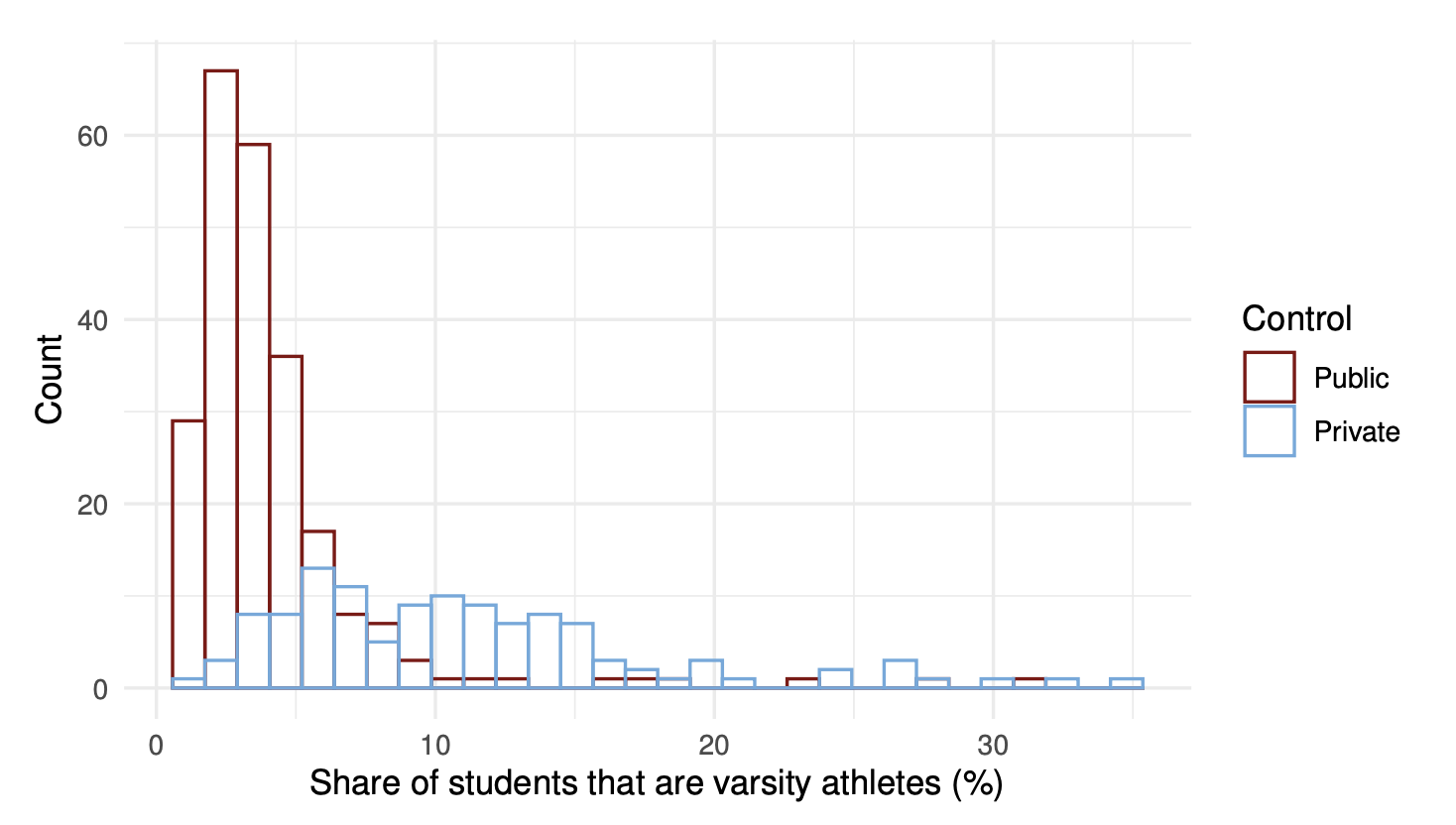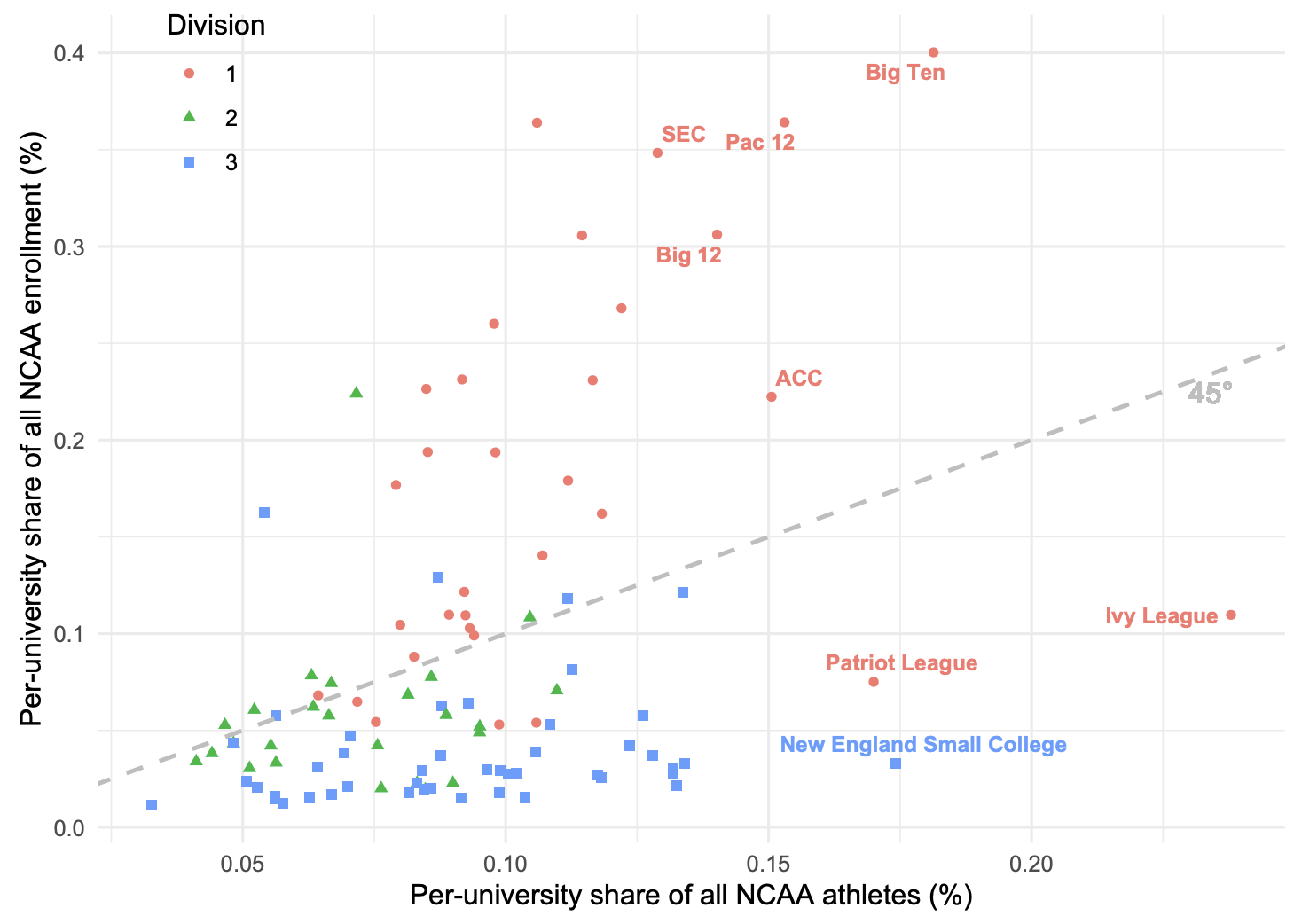Abstract
Admissions at elite private universities in the United States are becoming increasingly competitive. As competition increases, seats become more and more scarce. This paper analyzes the population of athletes at all Division I NCAA institutions. Using publicly available data from the US Department of Education, the NCAA, and institutions’ athletic rosters, we document several novel facts. First, elite institutions enroll more athletes and field more varsity teams than even the largest public institutions, despite having drastically smaller student bodies. To provide further context on the background of athletes at elite institutions, we supplement the institution-level analysis with individual-level data taken from publicly available athletic rosters. Finally, we analyze the effect of a hypothetical policy that would restrict student athletes at each universities to be less than a certain fraction of the overall student body.
Share (%) of students who are athletes by university and control, 2019–2020

Notes: The figure shows the distribution of the share of enrolled students who are athletes across all NCAA-affiliated universities during the 2019–2020 academic year.
Per-university share (%) of all NCAA athletes vs. per-university share of NCAA enrollment among all NCAA-affiliated universities, by athletic conference, 2019–2020

Notes: The figure plots each NCAA conference’s share of total enrollment (among all NCAA-affiliated universities) against each conference’s share of all NCAA athletes, as of the 2019–2020 academic year. Both shares are divided by the number of universities in the conference to produce a per-university estimate.For example, each Big Ten university’s enrollment accounts for about 0.4% of total enrollment in NCAA affiliated universities, while each Big Ten university’s athletic rosters make up only about 0.18% of all NCAA athletes